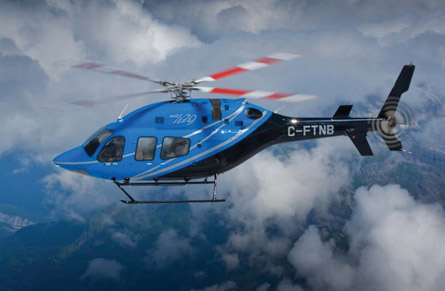Transport Canada officials are defending their recent exemption which allows Bell Helicopter to increase the maximum internal weight of the Bell 429 twin-engined helicopter from 3,175kg (7,000lb) to 3,402kg.
The increase puts the 429 in a certification class (above 3,175kg) normally covered by Part 29 transport helicopter rules, which are more rigorous than the Part 27 normal category rules under which the 429 was certificated.
Additional requirements for Part 29 include safety features such as continued safe flight and landing after hitting a 1kg bird at maximum speed. The boost is also helping Bell to market the medium twin in terms of additional range and/or payload.
 |
|---|
© Bell Helicopter |
The exemption has also incensed competing helicopter manufacturers, including AgustaWestland. "This is a change in the rules after the game is being played," said Roberto Garavaglia, senior vice-president of marketing for AgustaWestland. "The 429 will benefit from a grant that is not available to any other models."
Garavaglia pointed out that AgustaWestland certificated its Grand New twin at 3,175kg, the maximum weight for Part 27. "The definition of normal category and transport category appears to be more flimsy," he said.
Transport Canada, however, said the decision to grant the exemption "took into consideration the fact that the helicopter model in question was built to the most recent standards, whereas other helicopter models were certified to older standards".
"The department also conducted a safety risk assessment and concluded that granting the exemption would be acceptable provided certain design and operational conditions are imposed," Transport Canada added.
To qualify for the exemption, each helicopter must have a forward strobe light to frighten birds, a cockpit voice recorder, a terrain awareness and warning system and a radar altimeter. Bell said a retrofit kit with the items is available for $115,000.
Transport Canada said it "took the exceptional step" of consulting the US Federal Aviation Administration and European Aviation Safety Agency as part of the exemption process.
"Should any other company apply for an exemption, it would be given similar considerations," Transport Canada said.
Bell has applied for a similar exemption with both the FAA and EASA.
Source: Flight International























